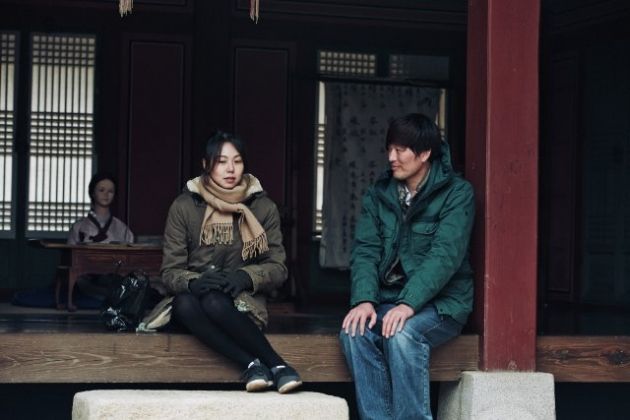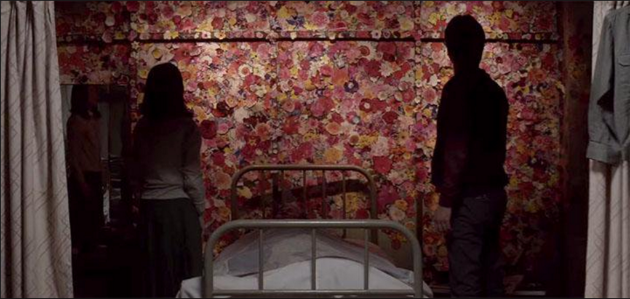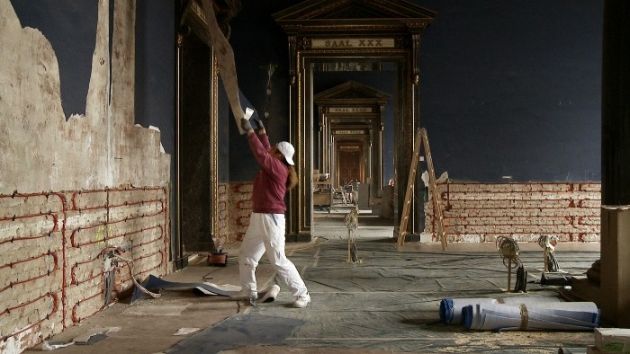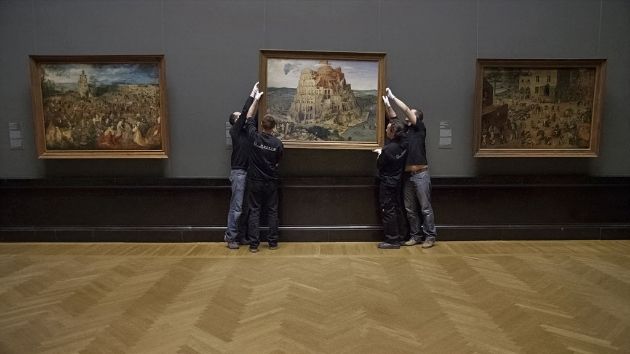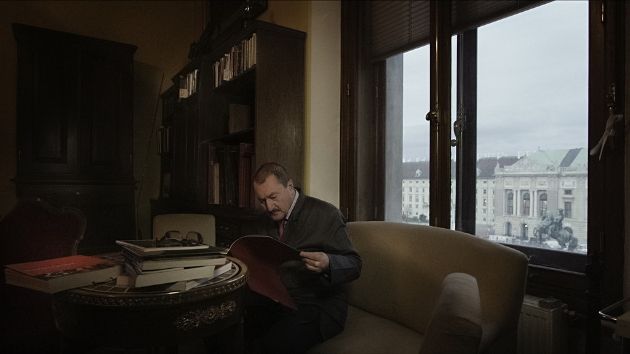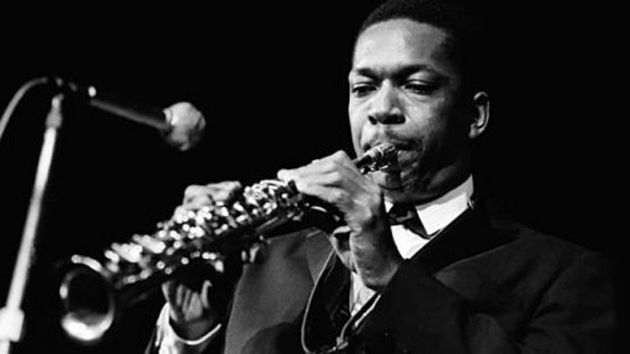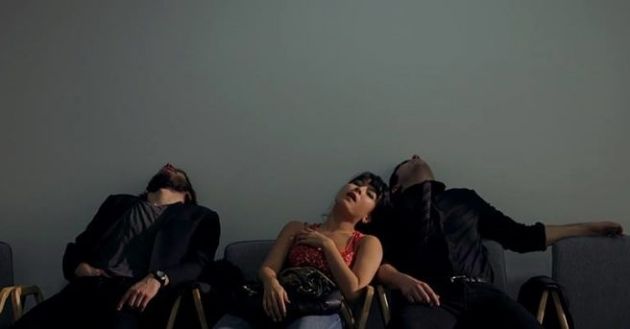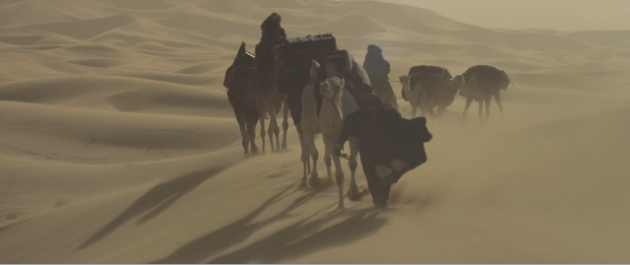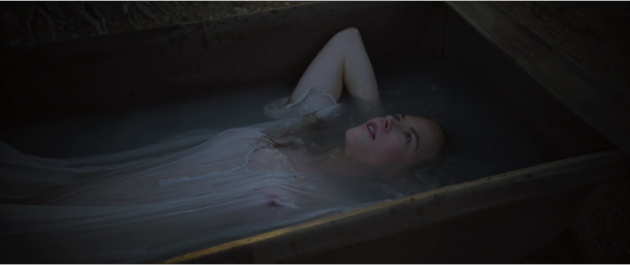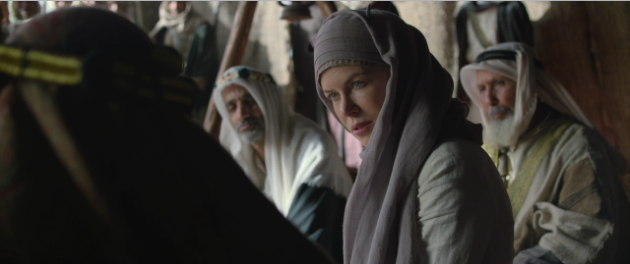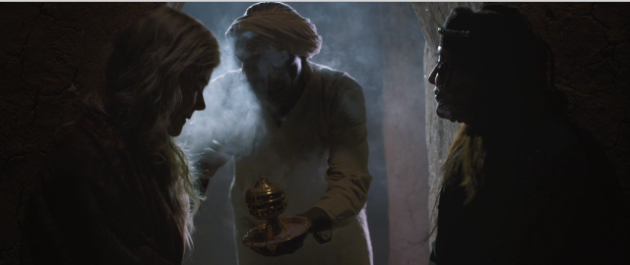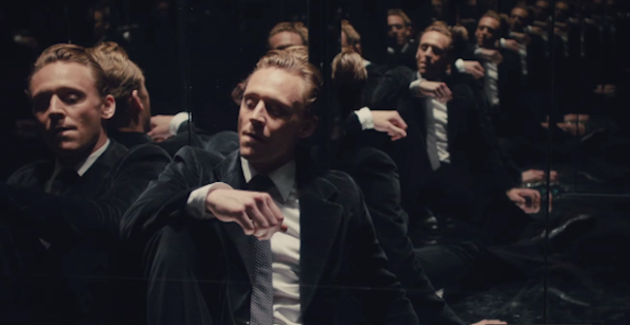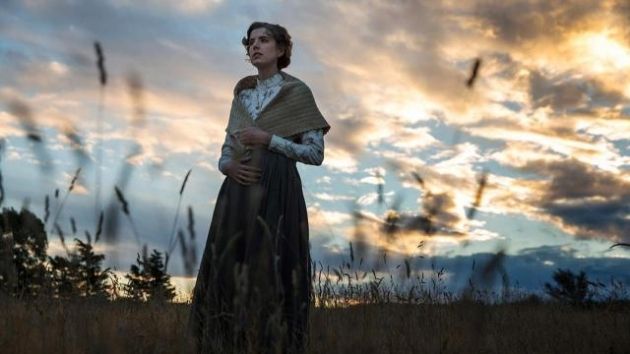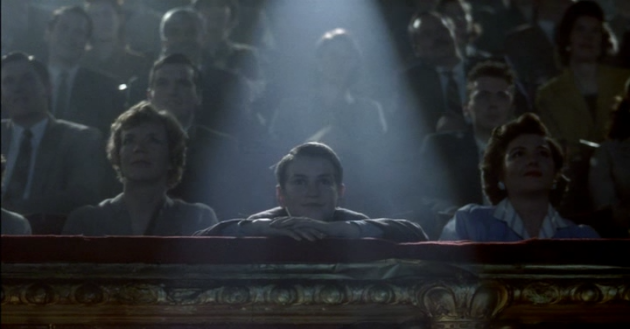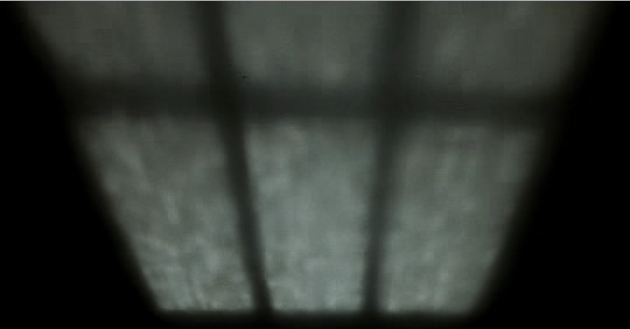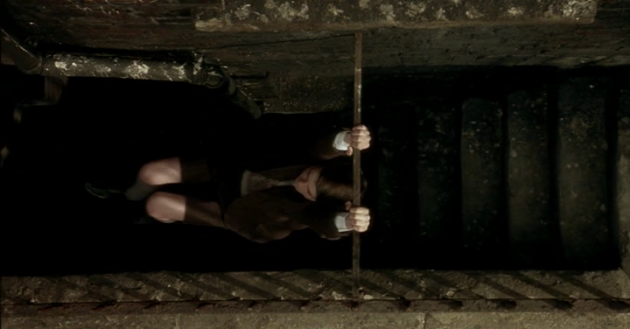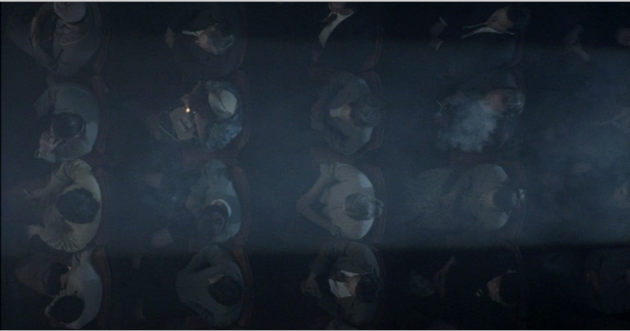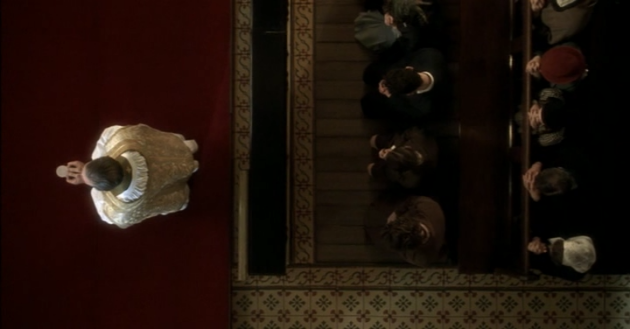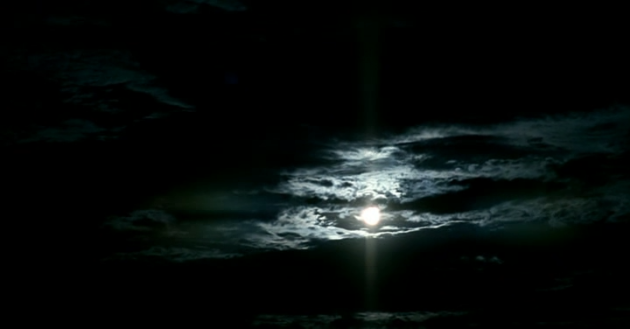
Terence Davies, regarded as one of the greatest living British directors, doesn't make films too often. So when he does, it's a monumental event every time. With his long delayed passion project Sunset Song finally coming out in theaters this weekend and A Quiet Passion, his new film about American poet Emily Dickinson already in the can, the 70 year-old British director suddenly finds himself more prolific than ever (he's done only 9 features in 4 decades of filmmaking).
He is in town for his complete retrospective at Museum of Moving Image, 5/7 - 5/22, and I got a chance to sit down with him for an interview.
It was quite intimidating meeting the master filmmaker in person, but his unguarded, warm disposition put me at ease. It wasn't long before Davies, in his Liverpudlian accent, enthusiastically, breathlessly, explained his craft to me. It was a truly spellbinding experience.
*Fair bit of warning here: this interview contains loads of spoilers for Sunset Song.
You have Sunset Song and A Quiet Passion coming out back to back! To whom do we owe thanks?
Yes, not by design but a sheer accident. (laughs) It comes down to money as it always does. We didn’t have enough money to shoot Sunset Song. It was a very difficult shoot because of not having enough money and the post production dragged on for a long time, again because of the money. In the mean time I’d already written the Emily Dickson Film, A Quiet Passion. And we ended up having shot that. And by the time we were finishing shooting, that, by sheer accident, happened. It never happened like that to me before.
It’s great. We didn’t have to wait 8 years for another Terence Davies film to come out! Haven’t seen Quiet Passion yet but am very excited.
I just love Emily Dickenson’s poetry. I think she is the greatest 19th century American poet. Although the very first thing I’ve ever read, I was 9 or 10, was The Song of Hiawatha, It has a great stretches in that octosyllabic rhyme. You can’t ever forget it. But thank god now who reads The Courtship of Miles Standish anymore? I’ve never responded Longfellow’s poetry but I think Dickinson was a true genius and was well before her time. And the great poems are truly, truly great. It’s so succinct, i mean it’s distilled down to the bare essence. That’s why it’s so powerful.
The dying needs but little, dear-
A glass of water’s all,
A flower’s unobtrusive face
To punctuate the wall,
A fan perhaps, a friend’s regret,
No color in the rainbow
Perceive when you are gone.
(grabs his chest) Just heartbreaking.
Bravo! I really wish I have a better ear for language. Sunset Song takes place in Scotland and the film’s based on a revered Scottish novel by Lewis Grassic Gibbon. Did you have to do a lot of preparation to get the language right? How was the adaptation process?
Not so much…whenever you do an adaptation of a novel or a play, you try to get an essence of it. While remain true to the source, something has to change. There are things you can do in a film that you can’t do in a novel and vice versa. but if you listen to the material, the content dictates form, never the other way around. I mean, it will tell you. The worst thing is when you get back into the editing room and there are two particular scenes you love and and they got to go. That’s really heart breaking, but the material’s telling you that it’s too much and you have to listen to that.
And sometimes you get the essence of what something is without literally doing what was in the book. I mean at the end of Sunset Song, the whole of Kinraddie come to these standing stones and the preacher preaches about forgiveness. The wind was so strong, the standing stones we had were going like this (swaying his hands). It was awful.
So what is it in the ending that is about forgiveness? Well, let’s make it domestic. We’ve already seen Kinraddie people: there was a thrashing dinner and there was her wedding, we didn’t see them any other time. so let’s make it domestic. And there it’s a poetic license: when the sun comes up, it comes up at the same time, it doesn’t come up separately. And to do that we make up something strange - light enters the room and it’s strange and that’s when we hear him come back. He says, I’ve come home and that captures the essence.
And she goes up to the stones and the sky and the piper and her voice over and that’s how it ends in the book. But it’s the getting there by a different route and you are restricted by what you shot. It looked awful. It was just grey and flat. So you have to something. What does the subtextual meaning of those closing pages? And you think, well I think this will do it. Just as you putting things that are not there - like the scene where she holds his clothes. that’s not in the book.
That was a beautiful scene.
The whole Kinraddie going to church. That's also not in the book. It just says the town goes to church and you hear the sermon which is awful - it's about two and a half pages long and its full of xenophobia and hatred. What would be wonderful I thought, was the whole of Kinraddie arrive, in this gorgeous light. Someone said, well they would not walk through the crops and I said I don’t care. They are going to walk through the crops. So they arrive in this golden light of god. And then, after that, going to the church wanting the grace of god, and the preacher tells to go and kill one another.
Right.
That’s what’s horrific. And I’ve known about that song, All in the April Evening, since I was about 17. That’s when I started to listen to classical music. There was a thing on the radio called your hundred best tunes, the best known classical music, you know, Peer Gynt and Lachmann and all that. And then I heard this and that was an amateur choir from Glasgow, which was founded by a Glasgow Region Undertaker and the singing was just amazing. I’ve never forgot it and when I started the adaptation, I was going to put it somewhere. Because it was really important for me.
Shooting outdoors and a lot of farm animals. Was it hard for you?
It was very very difficult. It comes back to us not having enough money. We all took the risk. There were times when I said, “Can we afford this" and and the answer was "No we can’t, we have to cut it from the script”. I’ve never done that in 14 years and I’d never ever want to do it again. Because it can really seriously damage the film- you are cutting things that perhaps are needed but once in the cutting room, you can’t go back to New Zealand for it. No, we can’t even go back to Scotland to redo things. So that was the great strain.
You went to New Zealand to shoot it?
Yes, for the summer sequences. Because you can’t rely on Scotland’s weather. It rains all the time so we had to go to New Zealand to shoot that. The seasons are characters and if it’s just too grey and flat, there is nothing interesting about that.
But it was a very hard shoot. But everyone pulled together. I couldn’t have done it without not just the crew and not just the actors but financiers and the bond company- they were so supportive, I can’t tell you. It was quite wonderful. But it did take a lot out of me. I thought, "I am not gonna work like this ever again!"
All the exterior scenes are shot on film but all the interiors are shot on digital. Do you have any opinions on all these changing technology and how you make and see the film?
There used to be film then. Film still had an edge. It’s one of the things you have to take care of- you choose the right stock and you do the test and you say yes, it should look like that. But all the interiors are inspired by a Danish painter called Hammershøi who was active in the late 19 and early 20th century. His paintings were like Vermeer but with a smudged northern lights. They are of empty rooms with the doors open and if there was as subject in them, they were usually women back to the view and are exquisite. Obviously not the same class as Vermeer, my favorite painter but they have that Vermeerlike quality - the stillness, the ghosts of those people who used to be in those rooms. Exterior was just the way it was. Sometimes we got lucky and got that gloaming light. But it was pure luck.
But when we came to do Emily Dickinson, the digital replaced the film. It’s just as good. In fact, it’s getting better.
So you are fine with that.
It’s just good. And what they can do now is breathtaking. It’s just marvelous. I think it’s as important as coming of sound really. On a practical level, when you mark the dissolve on a film, it will take you most of the day. It takes two days for it to come back from the laboratories and with this (digital), you can do it in an instant.
Right.
The drawback of that is it can rob you of thinking time. And you got to say no, I want to think about this for two days. You got to wait.
Right right.
Just like anything in your films, the casting is always Impeccable. You’ve worked with some great actresses in the past, Gina Rowlands, Gillian Anderson and Rachel Weisz. Agyness Deyn did an amazing job as Chris Guthrie, the protagonist of the film, but she is kind of unknown, isn’t she? Do you have a preference in with whom you want to work with? How did you get to cast her?
No. I always cast people who I think are right for the part. I don’t care if they are big names or not. I’m not interested in that. And I don’t know anything about popular culture or anything about models. It was our casting agents who found her and she was the first person (at the audition) Monday morning. And she gave the most wonderful audition and I said to my producer that we found her.
You can tell, I get the feeling that she is right for the part. It’s got to be felt. I always know. It’s like when you are shooting and you feel that you gonna get (what you want) this time. The thing is I don’t want them to act. If it doesn’t work, we can try it again, because it’s digital and it’s cheap. But really it’s usually first couple of takes that’s what ends up on the screen. In A Quiet Passion, most of them I got in less than 4 takes. For the rape scene and marriage scene (in Sunset Song) we did it once. I didn’t even plan on doing another take. I told her I can’t possibly put you through that again.
Other times, like the execution scene, these are all young lads from Luxembourg, because all the interiors and war scenes are shot in there. Someone said, “They can’t act.” and I said, “Look, just put them in costumes, frame it and we’ll just watch them.” and of course people don’t stand still. They shift the gun around. That’s what you do when you don’t do anything but stand still. And that’s what makes the scene. In fact we shot that scene in 48 frames per second. It’s slightly slower and what you get is like a ballet performance. It has to be - both balletic and horrible.
The tension and sadness in that scene is unbelievable but I didn’t even notice that it was slowed down.
The train goes by in the background somewhat slowly.
Oh yeah!
You’ve done series of films that feature tragic female protagonists. Has it been a conscious decision on your part?
No, I’m just attracted to the story. But you mustn’t forget that when I was growing up in the 50s the big commercial hits were all about women. Love is a Many Splendored Thing, Magnificent Obsession, All That Heaven Allows, they were all huge successes. So I grew up with the idea of women being the main protagonists. Then a TV came along and that’s where I relearned all Joan Crowford films for instance. And The Letter from Unknown Woman, The Heirless, those are huge riches when they were finally shown on television. And they were all about women. By sheer accident!
It was funny that I found a youtube clip of you introducing 2001: Space Odyssey in some TV program, explaining things very technically.
(Davies laughs)
Because however visually accomplished your films are, I don’t ever think of you as a technical director.
It’s because I work with people who are artists on their own right, they can help me the correct lenses in front of the camera. Because I can ever remember what I’m looking at when I look down on the lens. I write as I see it. And for pure practical reasons, because we haven’t got much money, you can say, this and this days we’ll be tracking, on this day we’ll need a crane and that day we will need 25 extras. Because you’ve got to husband your resources. Since we don’t have vast resources, so you’ve got to know what you are doing technically.
I guess A Quiet Passion is your second American film, set in Massachussettes.
We shot very little in America. Because of the lack of money, we shot most of it in Belgium. (laughs) And a lot of Belgian actors do very good american accent it turns out. So they rebuilt the exact replica of the Dickinson house with two separate floors. It's quite extraordinary. But we shot in America for 3 days or something. We just couldn’t afford it. The whole production was just pure joy. There wasn’t a single problem from beginning to end. Absolutely wonderful. Especially after sunset song which was a murder. Everything went right for A Quiet Passion. It was an absolute bliss. I should never complain again. (laughs)
I am very much looking forward to it. I hope it comes out soon.
Oh me too.
How was Cinthia Nixon as Emily Dickinson?
she was extraordinary. It is the most extraordinary performance. She is Emily Dickinson! She really is! There is this one shot where she turns around and it’s emily Dickinson. And Jennifer Earle, who plays her sister who is just radiant. When they have a rouse, you gotta watch out. They are family and they support each other to the hilt but when they fall out, they really fall out. And they really go for each other. They were quite wonderful. But that performance is the most extraordinary I’ve ever seen.
We did a lot of guide tracks of her reciting poems. After movie was shot and we were in the editing room, she asked me if she needs to recite the poems again. I said that’s not necessary. The way she reads them… The first time I discovered Emily Dickinson was Claire Bloom reading Because I could not stop for death. She read it with this air of amusement, as if this was happening to someone else. It was devastating. It was just…WHAT MADE YOU THINK OF DOING IT LIKE THAT?
So what’s next for you since you became so prolific all of sudden?
Well one is already written. It’s called Mother of Sorrows. It’s based on an American novel by Richard McCann. That’s probably gonna happen next year. And at the moment I am writing a film about Siegfried Sassoon. I was asked to do it.
You have a lot on your plate. And hopefully money will come along?
Now, I’m all for that!
